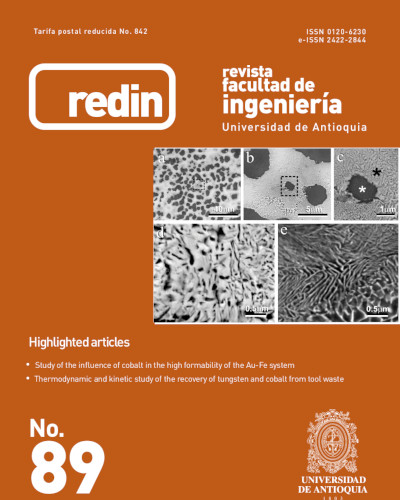Editorial
DOI:
https://doi.org/10.17533/udea.redin.n89a01Resumen
Nowadays, Artificial Intelligence (AI) is not just part of the plot of science fiction movies, but a real and important component of different devices and systems which we interact with every day. The work of computer scientists, mathematicians and engineers has allowed computers to interplay with humans through a kind of “conversation”, using speech recognition algorithms and voice synthesizers, which make users able to perform web searches or phone calls even without touching their phones. This is just one of the many examples where (AI) has become part of our lives. AI comprises many fields including robotics, natural language processing, artificial vision, expert systems, evolutionary computations, machine learning, speech processing, among others. Although many practical applications of AI involve the combination of several of these subfields, perhaps the one that has achieved more interest in recent years is Machine Learning (ML).
Descargas
Citas
N. Sharkey, “The Ethical Frontiers of Robotics”, Science, vol. 322, no. 5909, pp. 1800-1801, 2008.
R. Clarke, “Asimov’s Laws of Robotics: Implications for In-formation Technology-Part I”, Computer, vol. 26, no. 12, pp. 53-61, 1993.
R. Murphy and D. Woods, “Beyond Asimov: The three laws of responsible robotics”, IEEE Intelligent Systems, vol. 24, no. 4, pp. 14-20, 2009.
M. Goya, “The emulation of emotions in artificial intelligence: Another step into anthropomorphism”, in Emotions, Techno-logy, and Design, 1st ed., S. Tettegah and S. Noble (eds). Los Angeles, USA: Academic Press, 2016, pp. 171-186.
Descargas
Publicado
Cómo citar
Número
Sección
Licencia
Derechos de autor 2018 Revista Facultad de Ingeniería Universidad de Antioquia

Esta obra está bajo una licencia internacional Creative Commons Atribución-NoComercial-CompartirIgual 4.0.
Los artículos disponibles en la Revista Facultad de Ingeniería, Universidad de Antioquia están bajo la licencia Creative Commons Attribution BY-NC-SA 4.0.
Eres libre de:
Compartir — copiar y redistribuir el material en cualquier medio o formato
Adaptar : remezclar, transformar y construir sobre el material.
Bajo los siguientes términos:
Reconocimiento : debe otorgar el crédito correspondiente , proporcionar un enlace a la licencia e indicar si se realizaron cambios . Puede hacerlo de cualquier manera razonable, pero no de ninguna manera que sugiera que el licenciante lo respalda a usted o su uso.
No comercial : no puede utilizar el material con fines comerciales .
Compartir igual : si remezcla, transforma o construye a partir del material, debe distribuir sus contribuciones bajo la misma licencia que el original.
El material publicado por la revista puede ser distribuido, copiado y exhibido por terceros si se dan los respectivos créditos a la revista, sin ningún costo. No se puede obtener ningún beneficio comercial y las obras derivadas tienen que estar bajo los mismos términos de licencia que el trabajo original.










 Twitter
Twitter